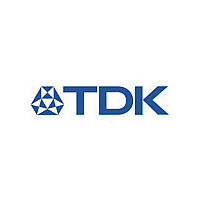C1608X7R1C103K TDK Corporation, C1608X7R1C103K Datasheet

C1608X7R1C103K
Specifications of C1608X7R1C103K
Available stocks
Related parts for C1608X7R1C103K
C1608X7R1C103K Summary of contents
Page 1
... Precisely-controlled dimensions are critical for accurate, high-speed automated placement. 4) Constructed of ceramic material and metal, MLC chip capacitors are extremely stable, and do not deteriorate, even under extreme environmental conditions. 5) Lack of device polarity and lateral symmetry simplify handling, placement, and inspection ...
Page 2
... TDK Multilayer Ceramic Chip Capacitors Application Manual Soldering technique by chip shape Type Reflow Flow ™ C1005 ™ ™ C1608 ™ ™ C2012 ™ ™ C3216 ™ C3225 ™ C4532 ™ C5750 ™ : applicable : non-applicable Reel packaging Taping material Paper carrier Tape cover ...
Page 3
... Solder pad design The solder filet volume will directly affect the strength of the chip capacitor. 1) The larger the amount of solder used on TDK multilayer ceramic chip capacitors, the greater the stress on the capacitors which results in a weakened condition. Solder land dimensions shall be designed to ensure that appropriate solder amounts are used ...
Page 4
... TDK Multilayer Ceramic Chip Capacitors Application Manual Land pattern recommended for flow use A B Type A B C1608 0 0 C2012 1.2 C3216 2.1 to 2.5 1.1 to 1.3 2) Why land dimensions differ in reflow and flow uses (points to observe) Dimension A: Reason that reflow < flow ...
Page 5
... Caution: Certain types of adhesives may reduce in insulation resistance. The differences in coefficients of thermal expansion (CTE) between the adhesives and the TDK multilayer ceramic chip capacitors may cause the chip to develop cracks. Use caution when applying adhesives because either too much or too little can cause problems. ...
Page 6
... Soldering Because the TDK multilayer ceramic chip capacitors will be in direct contact with molten solder during soldering, there will be stresses caused by the rapid rise in heat, and there will also be the danger of such things as flux residue and the dissolution of terminal electrode materials ...
Page 7
... TDK Multilayer Ceramic Chip Capacitors Application Manual Reflow soldering The reflow soldering method places the components on dispensed solder amounts on the printed circuit board. The chips are then attached by using heat to melt the solder. The method of heating for melting the solder may be the overall heating method or the local heating method ...
Page 8
... Relation in positions between parts with large heat capacity The occurrence of the tombstone effect can be held down by placing the TDK multilayer ceramic chip capacitors in proximity with the sides of the parts with large heat capacity. At this time, too, place the capacitors as close as possible to the parts with large heat capacity and make sure that the chip orientation is at right angles to the reflow direction ...
Page 9
... The TDK multilayer ceramic chip capacitors tested with solder at 230 to 250°C so that adequate measures must be taken to prevent thermal cracks. Caution: If TDK multilayer ceramic chip capacitors are used that exceed ...
Page 10
... This is because it is easy for the soldering iron to come into direct contact with the terminal electrodes on the TDK multilayer ceramic chip causing multiple cracking opportunities. Make sure that the soldering iron does not come into contact with the ceramic dielectric, only the terminations ...
Page 11
... Relation between solder amount and flex strength (C1005X7R1C103K) 100 80 Set horizontally in relationship to slit 60 Right amount of solder Installing in center circuit board units Relation between solder amount and flex strength (C1608X7R1C103K) 100 Too much solder Relation between solder amount and flex strength (C2012X7R1H103K) 100 ...
Page 12
... Board thicknesst =0.8mm 60 40 Board thicknesst =1.6mm Flex (mm) Chip shape and flex strength Relation between chip shape and flex strength 100 80 C1608X7R1C103K t=0.8mm 60 40 C2012X7R1C103K t=0.85mm Relation between chip thickness and flex strength (C2012X7R1H103) Board thicknesst =0.8mm 100 80 Chip thickness t=0.85mm ...
Page 13
... TDK Multilayer Ceramic Chip Capacitors Application Manual Solder quantity and heat shock Land dimensions and printed circuit boards used are determined by JIS C6429. Test conditions (assigning solder amount) Too much solder Too little solder Adequate solder amount Glass epoxy circuit board ...
Page 14
... TDK Multilayer Ceramic Chip Capacitors Application Manual Chip break strength Test method Conduct tests using tools shown below 1 8 Load rate : 30mm/min. S S:1.4mm(type 2012) Chip break strength (Type C2012) 20 C0G 15 Y5V X7R 0.6 0.85 Product thickness (mm) in millimeters 1.25 55 ...












